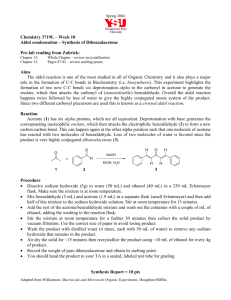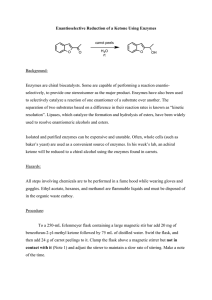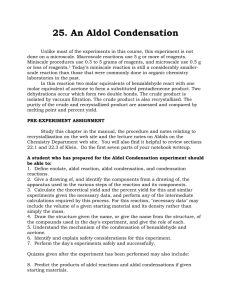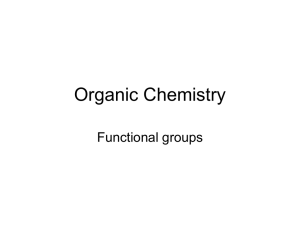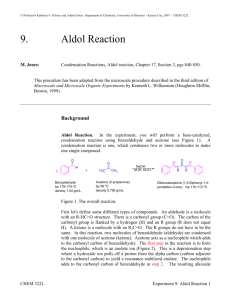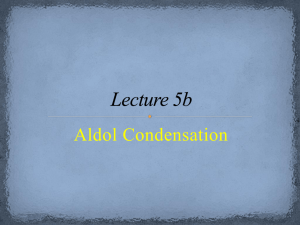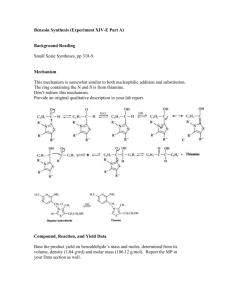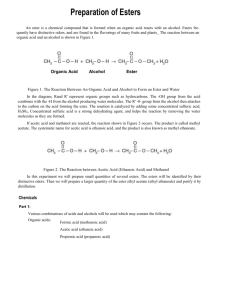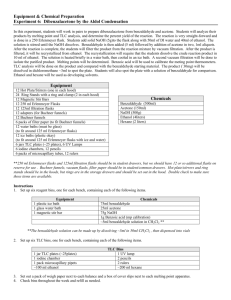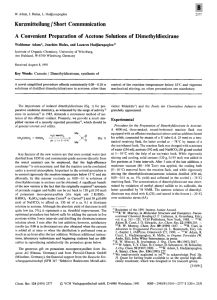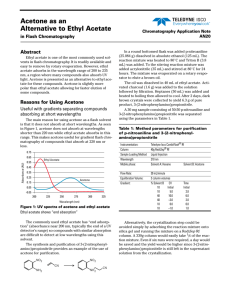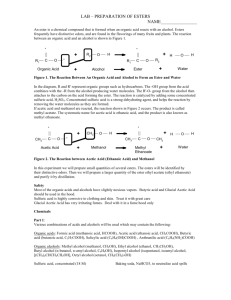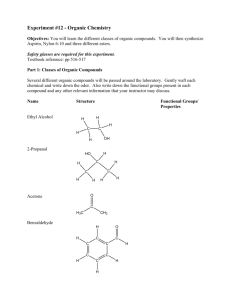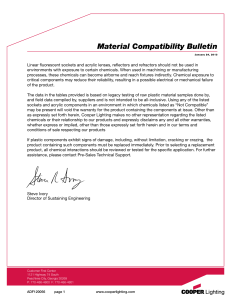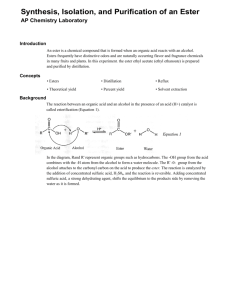Experiment 15 Preparation of Dibenzalacetone
advertisement
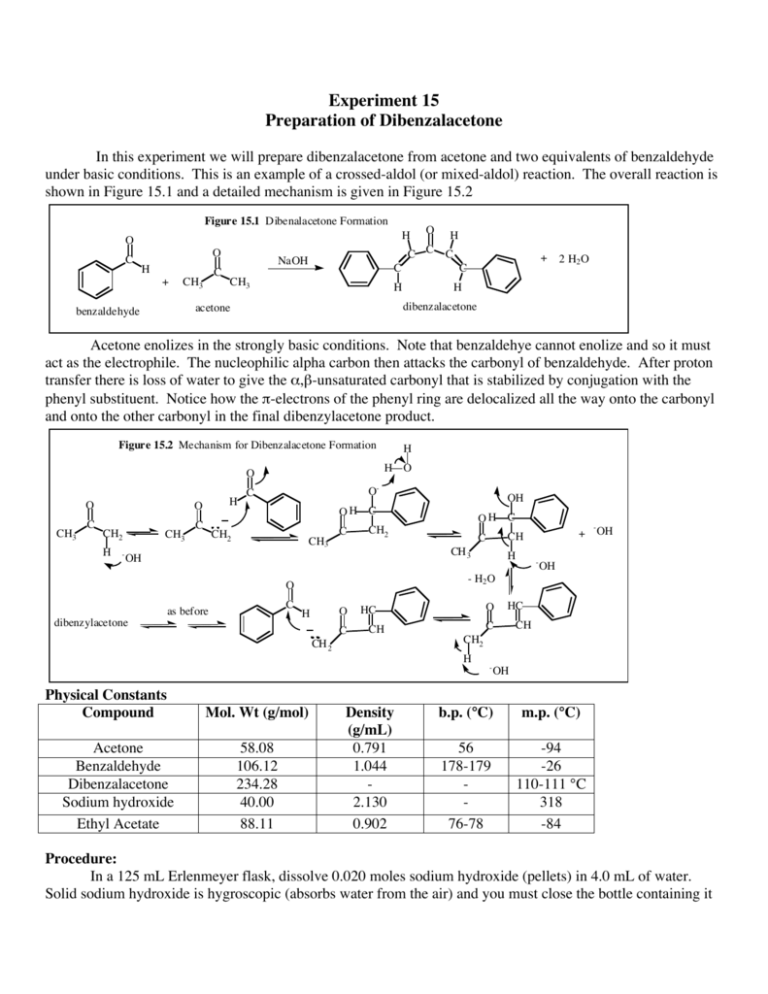
Experiment 15 Preparation of Dibenzalacetone In this experiment we will prepare dibenzalacetone from acetone and two equivalents of benzaldehyde under basic conditions. This is an example of a crossed-aldol (or mixed-aldol) reaction. The overall reaction is shown in Figure 15.1 and a detailed mechanism is given in Figure 15.2 Figure 15.1 Dibenalacetone Formation H O C O H + C CH3 C C NaOH C CH3 H C + C H 2 H2 O H dibenzalacetone acetone benzaldehyde O Acetone enolizes in the strongly basic conditions. Note that benzaldehye cannot enolize and so it must act as the electrophile. The nucleophilic alpha carbon then attacks the carbonyl of benzaldehyde. After proton transfer there is loss of water to give the α,β-unsaturated carbonyl that is stabilized by conjugation with the phenyl substituent. Notice how the π-electrons of the phenyl ring are delocalized all the way onto the carbonyl and onto the other carbonyl in the final dibenzylacetone product. Figure 15.2 Mechanism for Dibenzalacetone Formation O O CH3 C H O CH2 H - CH3 C H H O O- C CH2 CH3 C C O H C O HC CH Mol. Wt (g/mol) 58.08 106.12 234.28 40.00 88.11 - OH OH Density (g/mL) 0.791 1.044 2.130 0.902 HC C CH CH2 H Acetone Benzaldehyde Dibenzalacetone Sodium hydroxide Ethyl Acetate H - - H2 O CH 2 Physical Constants Compound + CH C CH 3 O as before OH C CH2 OH dibenzylacetone OH OH C - OH b.p. (°C) m.p. (°C) 56 178-179 76-78 -94 -26 110-111 °C 318 -84 Procedure: In a 125 mL Erlenmeyer flask, dissolve 0.020 moles sodium hydroxide (pellets) in 4.0 mL of water. Solid sodium hydroxide is hygroscopic (absorbs water from the air) and you must close the bottle containing it immediately after using it. The dissolution is exothermic and the contents of the Erlenmeyer will get warm. Allow the solution to cool before using it. In a 50 ml Erlenmeyer flask weigh out accurately 0.0160 moles benzaldehye and weigh into the same flask 0.0080 moles acetone. Add 10 ml of 95% ethanol and pour this mixture into the prepared solution of sodium hydroxide. Mix and swirl occasionally for fifteen minutes. A yellow, flocculent precipitate should form. Filter the solid product by vacuum using your spatula to transfer as much of the solid as possible to the Buchner funnel. After no more liquid is coming through the filter paper, disconnect the filter flask from the vacuum line, wash the solid with 10 mL water and, after about one minute, reconnect to the vacuum. Repeat the wash in the same way using 5 mL chilled 95% ethanol. Allow air to be sucked around the crystals for about 2 minutes. Recrystallize your product from ethyl acetate using a water bath and hot plate to heat the solvent. You can use a medium test tube or a small Erlenmeyer flask. Be careful. Ethyl acetate is flammable. Use approximately 2.5 mL of solvent per gram of product. Add about 1/2 the expected amount of ethyl acetate, stir with your spatula and heat the suspension to boiling. Add more ethyl acetate in 1 mL portions, reheating to boiling each time, until all solid material dissolves (solution becomes clear). Allow the solution to cool slowly to room temperature and then cool in an ice bath. Collect the final product on the Buchner funnel by suction filtration. Record the weight of your compound and calculate the percent yield. Take the melting point range of the dried compound and turn in your product in a small vial along with your Organic Yield Report sheet.
